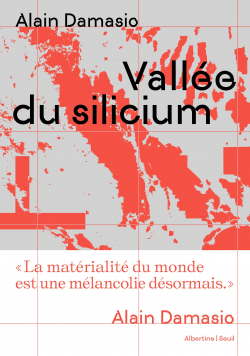Nicole de Brabandere (PhD, University of Arts, Linz) is an associate researcher at McGill University, Canada, and collaborator member at Hexagram. She is the editor of the forthcoming volume: Media, Practice and Theory: tracking emergent thresholds of experience, a collection of 10 chapters around concepts and practices of corporeality, articulation, and media, to be published by Vernon Press in spring, 2022. De Brabandere's PhD thesis was awarded the “Research Excellence Award” by the Austrian Federal Ministry of Education, Science and Research, an award which is given to the forty top doctoral dissertations in all of Austria, from all disciplines. De Brabandere has published numerous peer-reviewed articles on topics such as affect, creative practice, collaboration and media studies, and has presented talks, workshops and exhibitions in these topics at public and private venues internationally. In 2021 De Brabandere presented the short paper “Machine-Generated Portraits as Impersonal Gestures” for the International Symposium on Electronic Art (ISEA): Why Sentience? in 2021. The findings presented in this talk will be published in the experimental text “Co-composing the Perceptible across Affective, Painterly and Computational Generativities” for the special issue: Algo-rhythms, Kunstlicht Journal, Amsterdam, spring 2022.
Conference : Does painting machine-generated images open a spacetime of corporeal co-composition between humans and machines?
Friday 6 may 2022, 16h - 16h45 — Amphi orange
This talk presents findings detailing the emergent perceptibility of images created by the Generative Adversarial Network (GAN) of the website ThisPersonDoesNotExist.com. The machine-generated images sometimes achieve the photographic likeness of a person, but also make visible computational patterns that propose alternate organizations of form and ground, surface and substance, materiality and immateriality. What's more, images that initially appear to be objects signifying the real, upon close examination, have no single referential origin but are rather organized in strange configurations that traverse the photographic and computational. Through the careful study afforded by the process of painting these images, the appearance of referential figuration belies alternate generativities, where, for example, the appearance of depth-of-field or over-exposure is revealed as the substance of hair or cloth. While GAN renderings are generated in milliseconds, painting them offers an expanded temporality with which to engage their heterogeneous and transversal constitution. This in turn reconfigures the sense of facticity (and corresponding affects pitting subjects against objects) conjured by the photographic instant. The findings presented in this talk thus signal openings to engage and develop a felt sense of co-composition with the machine-generated image that traverses the human and machine.

Luc De Brabandere/5
2 notes
Résumé :
Mathématiques, logique, informatique. Où l’on découvre que ces trois mondes n’en forment qu’un... qui a mis trois mille ans à se constituer. Une histoire peuplée de chiffres, de raisonnements et d’ordinateurs... mais une histoire avant tout humaine, qui nous fera rencontrer une vingtaine de personnalités hors du commun, certaines injustement méconnues. De Leibniz à Boole, de Russell à Shannon, de Bayes à Wiener, tous les acteurs de cette histoire pour le moin... >Voir plus
étiquettes
Ajouter des étiquettes
Que lire après Homo informatixVoir plus
critiques presse (2)
Luc de Brabandere dévoile en somme l’enjeu cardinal de la révolution planétaire actuelle que nous vivons tous, peu ou prou, entre bien et mal.
Lire la critique sur le site : LaLibreBelgique
Dans son dernier essai, Luc de Brabandere, "philosophe d'entreprise", remonte aux sources de l'informatique moderne. Et s'interroge sur la part d'ombre que porte l'essor des technologies numériques.
Lire la critique sur le site : Lexpress
Citations et extraits (1)
Ajouter une citation
La formule de Bayes – autre géant dont nous ferons la connaissance – est au cœur des algorithmes de l’Internet. La puissance des ordinateurs a permis d’ouvrir, grâce à des circuits… logiques, une nouvelle branche des mathématiques : la géométrie fractale. Etc
Videos de Luc De Brabandere (4)
Voir plusAjouter une vidéo
autres livres classés : informatiqueVoir plus
Les plus populaires : Non-fiction
Voir plus
Les Dernières Actualités
Voir plus
Autres livres de Luc De Brabandere (22)
Voir plus
Quiz
Voir plus
Philo pour tous
Jostein Gaarder fut au hit-parade des écrits philosophiques rendus accessibles au plus grand nombre avec un livre paru en 1995. Lequel?
Les Mystères de la patience
Le Monde de Sophie
Maya
Vita brevis
10 questions
438 lecteurs ont répondu
Thèmes :
spiritualité
, philosophieCréer un quiz sur ce livre438 lecteurs ont répondu










































